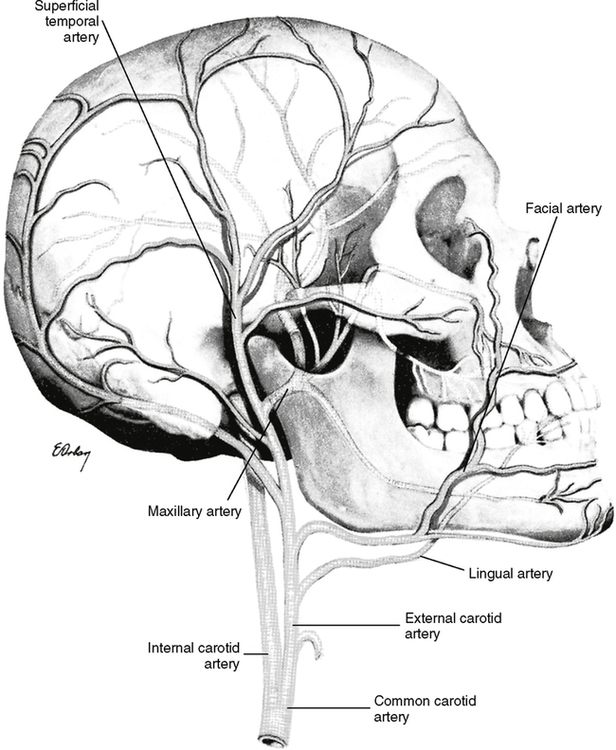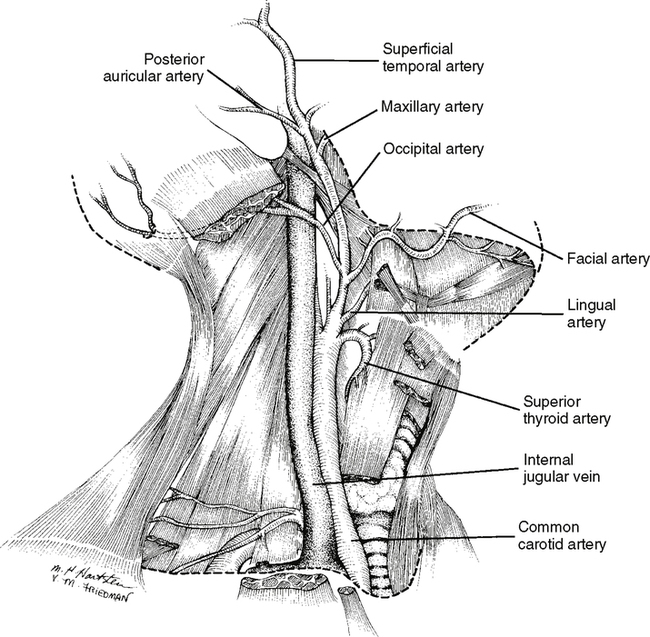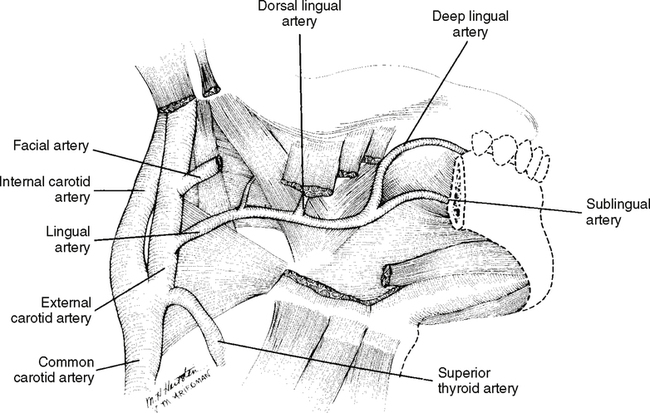Arterial Supply and Venous Drainage
• To trace the blood from the time it returns from the body to the heart, out, and back until it returns again from the overall body
• To trace the blood supply from the heart to all areas of the oral cavity, including the teeth
• To trace the venous drainage from the teeth and oral cavity back to the heart
• To discuss the possible problems associated with a posterior superior alveolar injection
ARTERIAL SUPPLY
Common Carotid Artery
The internal carotid artery has no branches in the neck but goes up to enter the skull. Once inside the skull, it branches to supply the eyes, the brain, and some limited regions of the coverings of the brain (Fig. 32-1).

Unlike the internal carotid artery, the external carotid artery has a number of branches in the neck, as shown in Figs. 32-1 and 32-2. The best way to study these arteries are by the directions and orders in which they come off of the external carotid artery.
Anterior branches: There are three anterior branches. In order of lowest to highest, they are (1) the superior thyroid artery to the thyroid gland and larynx; (2) the lingual artery to the tongue and floor of mouth; and (3) the facial artery that supplies the submandibular salivary gland, the area beneath the chin, and the face.
Medial branches: There is only one medial branch, the ascending pharyngeal artery to the pharyngeal wall and tonsil area.
Posterior branches: There are two posterior branches, (1) the occipital artery to the occipital region, and (2) the posterior auricular artery to the area behind the ear.
Lingual artery
The lingual artery branches off the external carotid artery below the facial artery. The lingual artery then travels forward and deep, going beneath the hyoglossus muscle of the tongue and ending in three branches: the dorsal lingual artery to the deep posterior part of the tongue, the deep lingual artery to the deep anterior part of the tongue, and the sublingual artery to the ventral surface of tongue and floor of the mouth. The lingual artery supplies the tongue and the tissue in the floor of the oral cavity. If you have ever cut your tongue, you know that there is a well-developed blood supply within this tissue, which is completely supplied by the lingual artery (Fig. 32-3). Quite frequently the lingual and facial arteries come off the external carotid as one branch and then split. This branch is referred to as the linguofacial trunk.
Stay updated, free dental videos. Join our Telegram channel

VIDEdental - Online dental courses




